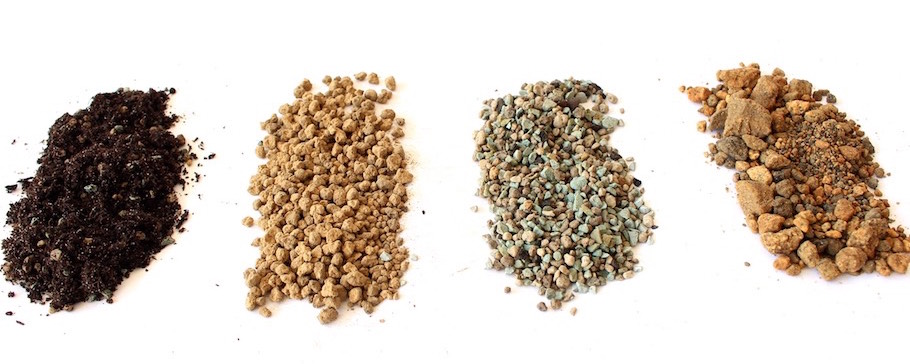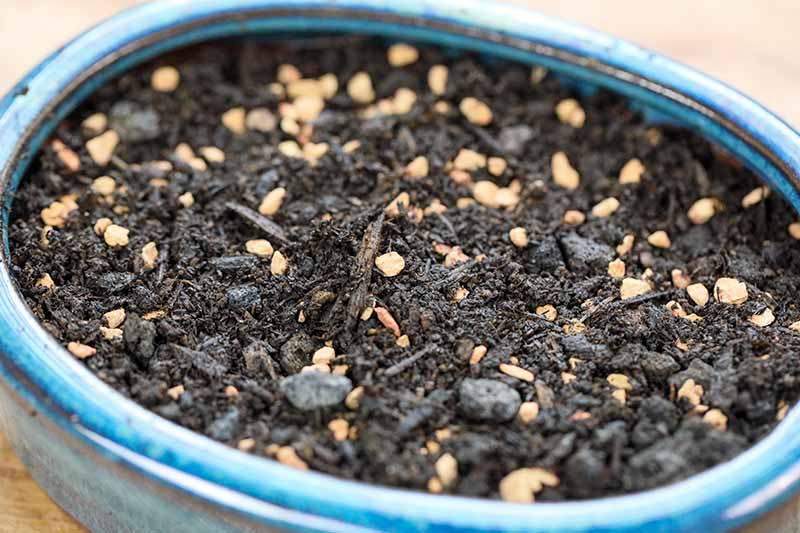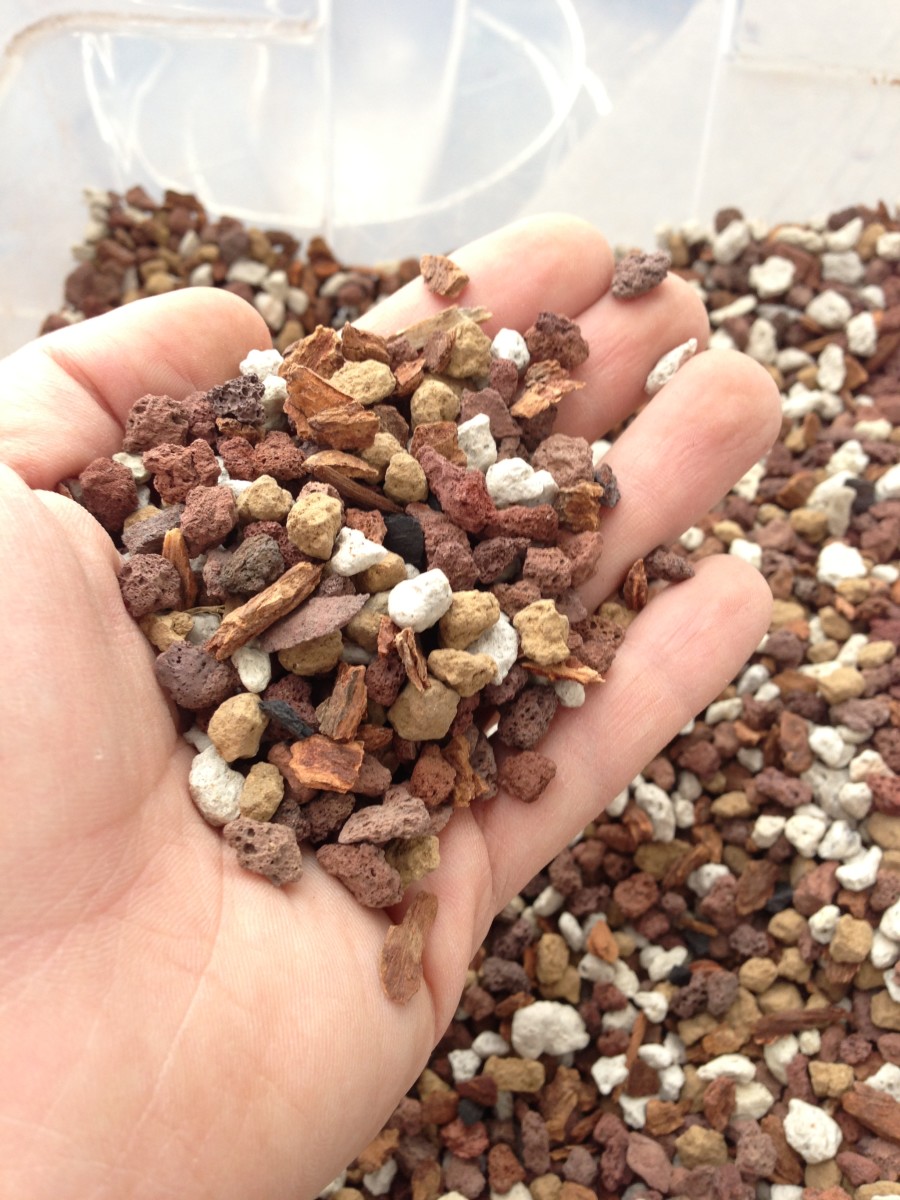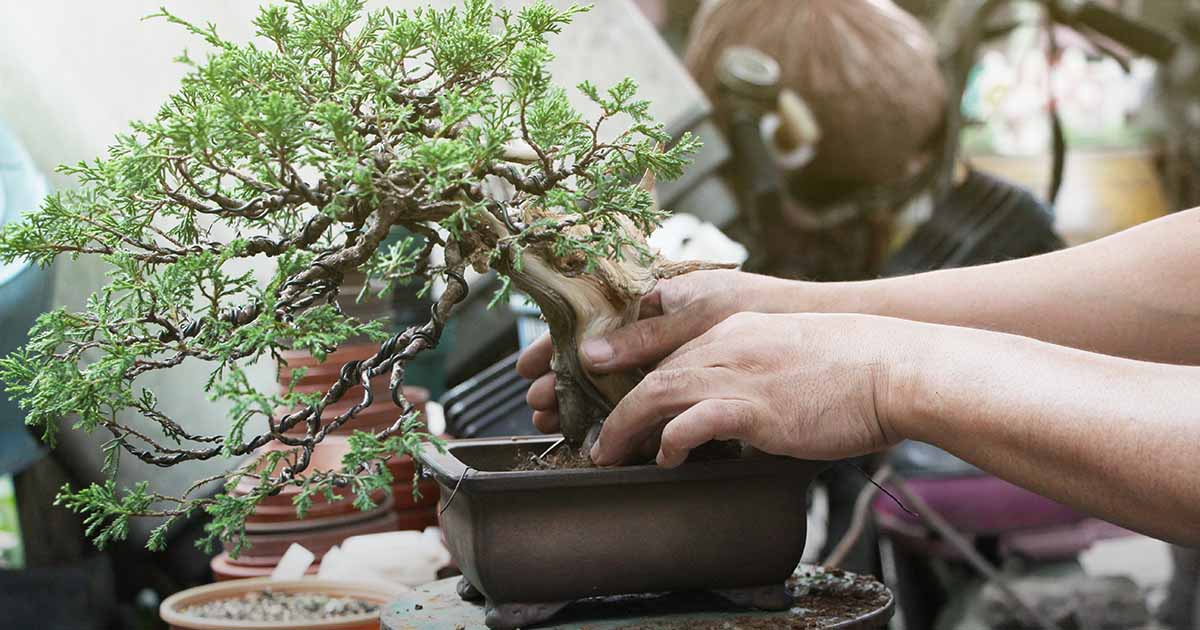In the following paragraphs, we will check out the different sorts of soil and substrates Utilized in bonsai cultivation, which includes natural and inorganic choices.
We are going to also find out recommended soil mixtures for various bonsai species, which include deciduous, coniferous, and indoor versions. From akadama and pumice to moss and river sand, we will dive in to the fascinating environment of bonsai soil and assist you realize why It truly is a significant Section of cultivating these exquisite trees.

Bonsai soil
What is bonsai soil?
Bonsai soil is a specialized type of soil that is specifically formulated for growing and maintaining bonsai trees. Unlike regular garden soil, bonsai soil is well-draining and provides the necessary nutrients and moisture balance for the tree's root system. The composition of bonsai soil is carefully designed to meet the unique needs of bonsai trees, ensuring their health and longevity.
The importance of bonsai soil
The choice of soil plays a crucial role in the success of your bonsai tree. The right soil provides optimal drainage, allowing excess water to flow freely and preventing root rot. It also promotes a healthy and well-developed root system, which is essential for the overall health and growth of the tree. Bonsai soil retains moisture while allowing air to reach the roots, striking the perfect balance for the tree's needs. Choosing the right bonsai soil is essential for maintaining a healthy and thriving bonsai tree.
Bonsai substrates
What are bonsai substrates?
Bonsai substrates refer to the different materials that can be used to create the ideal soil composition for bonsai trees. These substrates are carefully chosen to meet the specific needs of different species of bonsai trees and to ensure proper water drainage and nutrient availability.
Different types of bonsai substrates
There are various types of bonsai substrates available, each with its own unique characteristics and benefits. Some common bonsai substrates include:
- Organic materials: These include ingredients such as bark, peat moss, and coconut coir. Organic substrates help retain moisture and provide essential nutrients to the bonsai tree.
- Inorganic elements: These contain factors like pumice, lava rock, and akadama. Inorganic substrates provide fantastic drainage, guaranteeing that excess h2o won't accumulate throughout the roots with the bonsai tree.
- Soil amendments: They are substances which have been extra to the soil mixture to boost its Houses. Samples of soil amendments contain perlite, vermiculite, and sand. They Enhance the soil's aeration, water-holding capability, and nutrient availability.
By being familiar with the differing types of bonsai substrates as well as their Qualities, you can pick the best suited one particular for your personal bonsai tree's requirements.
Organic or Inorganic Soils
Natural and organic soils for bonsai
Organic and natural soils for bonsai are made up of purely natural products like bark, peat moss, coconut coir, and compost. These materials give a abundant supply of nutrients for that bonsai tree and market wholesome root advancement. Natural soils also have superior drinking water retention Attributes, making certain that the tree gets ample moisture amongst watering classes. On the other hand, it is important to note that natural soils may possibly stop working as time passes and turn out to be compacted, leading to lousy drainage and prospective root problems.
Inorganic soils for bonsai
Inorganic soils for bonsai include products like pumice, lava rock, akadama, and soil amendments like perlite or vermiculite. These elements have fantastic drainage Houses, avoiding waterlogged soil and endorsing aeration within the roots. Inorganic soils are most popular by several bonsai fans because of their longevity and ability to offer a secure setting for the bonsai tree's root technique. Having said that, They might need much more frequent watering and additional fertilization, as they don't maintain just as much moisture or nutrients as organic and natural soils.
Positives and negatives of utilizing natural and organic and inorganic soils for bonsai
Picking among organic and inorganic soils for the bonsai tree is dependent upon several things, such as the particular species of tree, your local climate, and private Tastes. Here i will discuss the advantages and drawbacks of each:
Organic and natural soils:
- Professionals: Give nutrients, superior water retention, boost healthy root enhancement.
- Negatives: May stop working after a while, likely for lousy drainage Otherwise effectively maintained.
Inorganic soils:
- Professionals: Superb drainage, extended-Long lasting, stable ecosystem for roots.
- Downsides: Significantly less h2o retention, may well demand much more frequent watering and fertilization.
By thinking of the positives and negatives of both of those organic and natural and inorganic soils, you can also make an informed final decision determined by the precise requirements of the bonsai tree.
Soil factors
Vital factors of bonsai soil
Bonsai soil is usually composed of three major components: grit, natural make a difference, and clay. These elements get the job done alongside one another to generate The best soil composition to the bonsai tree's root technique.
- Grit: Grit, for example sand or perlite, presents drainage and aeration inside the soil. It can help protect against waterlogging and makes it possible for air to reach the roots.
- Natural issue: Natural and organic make a difference, including compost or bark, gives nutrients into the bonsai tree. In addition, it assists keep dampness and improve the soil's Over-all construction.
- Clay: Clay particles deliver some drinking water retention features and aid bind the soil with each other. Having said that, excessive clay can result in lousy drainage and compaction.
Function of every soil ingredient
Each soil part plays a significant function in making a very well-balanced and healthier ecosystem for your bonsai tree's roots.
- Grit: Grit supplies the mandatory drainage and aeration within the soil. It stops the roots from sitting down in stagnant water, minimizing the potential risk of root rot and marketing In general root well being.
- Organic and natural make any difference: Natural make any difference presents necessary nutrients towards the bonsai tree. It aids in humidity retention and contributes to the general structure in the soil.
- Clay: Clay particles support bind the soil jointly and supply some drinking water retention potential. Nonetheless, it is important to harmony the quantity of clay to stay away from problems like very poor drainage and compaction.
By knowing the roles of each and every soil component, you are able to make a balanced bonsai soil combine that fulfills the particular requirements of the tree.

Recommended Bonsai soil mixtures
Common bonsai soil mixtures
There are several common bonsai soil mixtures that have been proven effective for various types of bonsai trees. These mixtures typically consist of a combination of inorganic substrates, organic matter, and soil amendments.
Some of the commonly used bonsai soil mixtures include:
- Akadama, pumice, and lava rock: This mixture is popular among bonsai enthusiasts for its excellent drainage and water retention properties.
- Akadama, lava rock, and organic and natural make any difference: This mixture brings together the main advantages of inorganic substrates with the nutrient-wealthy Qualities of natural make a difference.
- Pumice, perlite, and bark: This mixture offers excellent drainage and aeration even though retaining some dampness and giving nutrients.
They're only a few examples of bonsai soil mixtures, and the ideal combination will depend upon the precise demands of your bonsai tree along with your local weather.
Elements to contemplate when choosing a bonsai soil combination
When selecting a bonsai soil mixture, it is vital to look at the next aspects:
- Species of bonsai tree: Distinct species have various humidity and nutrient necessities. Research the specific needs within your tree to pick out a soil mixture that meets its prerequisites.
- Weather: The local weather you live in can impact the humidity retention Houses in the soil. Consider the ordinary humidity and temperature in your neighborhood when choosing a soil mixture.
- Watering habits: Your individual watering patterns and regime really should align Along with the soil mixture you end up picking. Some mixtures need extra Repeated watering, while some retain humidity for for a longer time durations.
- Funds: Some soil components can be more expensive than Some others. Contemplate your spending plan when picking a soil combination.
By taking these components into account, you may select a bonsai soil combination that gives the most effective escalating problems for your tree.
Deciduous Bonsai soil
Greatest soil composition for deciduous bonsai
Deciduous bonsai trees, for instance maple or birch, have distinct soil prerequisites to assist their advancement and health and fitness. The top soil composition for deciduous bonsai generally features a mix of organic and natural matter, inorganic substrates, and soil amendments.
A advisable soil composition for deciduous bonsai may perhaps contain:
- Akadama: Delivers great water retention even though enabling for drainage. Additionally, it releases nutrients bit by bit over time.
- Pumice: Promotes aeration and drainage while in the soil, protecting against waterlogging.
- Bark or peat moss: Adds organic and natural make any difference into the soil, furnishing nutrients and dampness retention.
This soil composition makes certain that the roots of deciduous bonsai trees receive the proper stability of dampness, nutrients, and oxygen for ideal growth.

Coniferous and Pine soil
Ideal soil mixture for coniferous and pine bonsai
Coniferous and pine bonsai trees have specific soil requirements due to their water retention needs and preference for acidic soil. An ideal soil mixture for coniferous and pine bonsai should provide good drainage while retaining moisture and maintaining the desired pH level.
A recommended soil mixture for coniferous and pine bonsai may include:
- Akadama: Provides excellent water retention while allowing for sufficient drainage. It releases nutrients slowly over time.
- Pumice: Encourages aeration and drainage while in the soil, protecting against waterlogged roots.
- Peat moss: Adds organic and natural subject and acidity towards the soil, building a great pH degree for coniferous and pine trees.
This soil combination makes sure that the roots of coniferous and pine bonsai trees get the appropriate equilibrium of moisture, nutrients, and acidity for their certain demands.
Akadama
Precisely what is akadama?
Akadama is often a form of clay soil that may be widely used in bonsai cultivation. It's recognized for its great drinking water retention properties, which make certain a steady provide of moisture into the bonsai tree's roots. Akadama is also prized for its capability to release nutrients slowly after a while, furnishing a consistent source of nourishment with the tree.
Advantages of applying akadama in bonsai soil
Using akadama in bonsai soil provides many Advantages:
- Water retention: Akadama has Excellent h2o retention Houses, allowing for it to hold dampness with out turning into waterlogged. This makes certain that the bonsai tree's roots get a continuous provide of drinking water, endorsing wholesome progress.
- Nutrient launch: Akadama slowly but surely releases nutrients in the soil after a while, furnishing a constant source of nourishment for that bonsai tree. This cuts down the need for frequent fertilization and aids maintain a balanced nutrient profile.
- Aeration: Regardless of its water retention abilities, akadama also presents sufficient aeration for the bonsai tree's roots. It makes it possible for air to get to the root procedure, preventing problems for example root rot on account of not enough oxygen.
By incorporating akadama in to the bonsai click here soil, it is possible to build an optimal expanding surroundings on your tree, guaranteeing its health and fitness and vitality.

Lava rock
How lava rock benefits bonsai soil
Lava rock is a popular component in bonsai soil mixtures due to its excellent drainage and aeration properties. It is typically used in conjunction with other substrates to create the ideal soil composition for bonsai trees.
The benefits of lava rock in bonsai soil include:
- Drainage: Lava rock provides excellent drainage, preventing waterlogging and ensuring that excess water flows freely through the soil. This helps prevent root rot and provides a healthy environment for the roots to thrive.
- Aeration: The porous mother nature of lava rock lets air to flow into within the soil, offering oxygen on the bonsai tree's root technique. Right aeration is important for healthier root growth and overall tree progress.
- Longevity: Lava rock can be a durable materials that does not break down easily. This ensures that the soil structure continues to be secure eventually, reducing the necessity for Repeated soil replacements.
Lava rock is available in various sizes and designs, making it possible for for personalisation based upon the specific needs of one's bonsai tree and soil requirements.
Different types of lava rock
There are differing kinds of lava rock which might be Utilized in bonsai soil mixtures, such as:
- Black lava rock: Black lava rock can be a typically employed materials in bonsai soil mixtures. It provides great drainage Homes and provides an aesthetic component to the overall presentation from the bonsai tree.
- Red lava rock: Pink lava rock is yet another common selection in bonsai soil mixtures. It offers similar drainage and aeration benefits as black lava rock but has a distinct reddish colour that provides Visible fascination for the container.
Each black and red lava rocks are commonly accessible and can be very easily integrated into your bonsai soil combination.
Potting
Necessary strategies for effective bonsai potting
Potting is really a critical procedure in bonsai cultivation, because it right impacts the well being and advancement with the tree's roots. Here are a few necessary tips for profitable bonsai potting:
- Choose the right pot dimensions: Pick a bonsai pot that allows for root expansion although nevertheless supplying a comfortable in shape. Stay away from pots that happen to be also large, since they can result in too much soil dampness and weak root growth.
- Use bonsai wire: Protected the tree from the pot using bonsai wire to ensure security. This stops the tree from shifting or starting to be uprooted for the duration of watering or solid winds.
- Trim and spread the roots: Before potting the bonsai tree, diligently trim and distribute out the roots. This encourages outward advancement and helps prevent root tangling or root-bound difficulties.
- Insert mesh screens: Area mesh screens around the drainage holes at The underside on the pot to forestall soil erosion and make sure appropriate drainage.
- Use clean bonsai soil: When potting, often use new bonsai soil to supply the mandatory nutrients and ideal expanding disorders to the roots.
By following these critical guidelines, it is possible to ensure An effective potting procedure and boost the overall wellbeing and development of your respective bonsai tree.
The function of bonsai pots in soil dampness control
Bonsai pots Engage in a crucial part in soil humidity Manage, specifically impacting the well being and expansion of the tree. Bonsai pots are usually shallow and possess drainage holes, allowing extra h2o to flee and stopping the soil from getting waterlogged.
The design of bonsai pots encourages evaporation and air circulation, which assists regulate soil humidity levels. The shallow depth and vast opening with the pot expose more surface area place of the soil for the air, aiding in dampness evaporation. This helps prevent the roots from sitting down in excessively wet soil, lowering the read more chance of root rot as well as other drinking water-connected difficulties.
Additionally, the drainage holes in bonsai pots enable any surplus h2o to flee, stopping waterlogged soil and selling aeration within the roots. Proper aeration is essential for the wellness and growth of the root process, making sure the bonsai tree gets the mandatory oxygen for expansion.
By using bonsai pots created for effective moisture Handle, you may build a favorable atmosphere for the bonsai tree's roots and encourage its Over-all wellbeing and vitality.
In summary, picking out the appropriate bonsai soil is important to the accomplishment and wellness of the bonsai tree. Comprehension the different sorts of bonsai substrates, the purpose of natural and organic and inorganic soils, The real key factors of bonsai soil, and the varied suggested soil mixtures will let you give the best rising problems to your bonsai tree. No matter whether you've got a deciduous or coniferous bonsai, incorporating supplies like akadama and lava rock can enhance the soil's drainage and nutrient availability. Additionally, taking note of potting approaches and employing bonsai pots made for moisture Command will even further help the thriving expansion of one's bonsai tree. With proper being familiar with and implementation of bonsai soil techniques, you'll be able to enjoy the natural beauty and artistry of bonsai cultivation For several years to come back.
